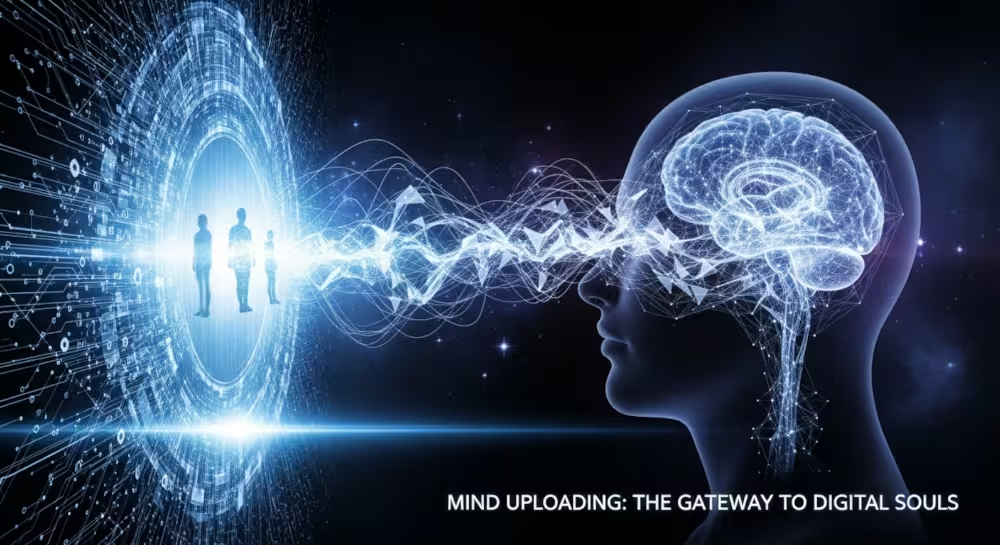Digital Immortality: Can AI Preserve Human Consciousness?

What Is Digital Immortality?
Digital immortality refers to the theoretical preservation of human consciousness in a digital format, allowing individuals to exist beyond their biological lifespan.
Although it sounds like science fiction, rapid advancements in artificial intelligence, neuroscience, and data processing have turned digital immortality into a serious field of exploration.
If technologies such as mind uploading become viable, humanity may start to see death not as an end but as a transition into digital existence.
Key Concepts
- Digital Immortality: Preserving human consciousness in a digital environment.
- Mind Uploading: Transferring cognitive functions and memories to a computer.
- Consciousness: Awareness, subjective experience, and personal identity.
- AI Afterlife: Continued existence through artificial intelligence beyond death.
- Ethics of AI: Principles guiding the moral use of artificial intelligence.
- Data Security: Protection of digital information and identity from misuse.
Mind Uploading: The Gateway to Digital Souls

At the heart of digital immortality lies the concept of mind uploading.
In theory, a person’s brain could be mapped, digitized, and transferred into a computer system, creating a digital soul capable of existing in a virtual environment.
Technological Requirements
| Aspect | Description | Current Status |
|---|---|---|
| Neural Mapping | Mapping brain connections in detail | Still in research phase |
| Data Storage | Storing massive brain data | Improving with new tech |
| Processing Power | Real-time consciousness transfer | Rapidly advancing |
| Simulation Environments | Virtual worlds for digital life | Early prototypes exist |
Core Ethical Questions
- Is a digital upload truly you or just a copy?
- Should digital beings have legal rights?
- How would families and societies adapt to “digital selves”?
The Future of Consciousness Transfer

The dream of transferring consciousness digitally is both exciting and complex.
Key Challenges
- Limited understanding of human consciousness.
- Technical barriers in mapping the brain.
- Questions about identity and continuity.
- Security risks of storing human minds digitally.
- Psychological and social consequences.
Despite these obstacles, progress in AI and neuroscience keeps moving us closer to the possibility of digital immortality.
Ethical Implications
Digital immortality is not just about technology — it’s also about morality and law.
- Who owns the rights to a digital copy of yourself?
- Can a digital version of you be deleted or altered?
- Should digital entities count as legal persons?
Developing ethical frameworks and legal guidelines will be essential before digital immortality becomes a reality.
Practical Steps Toward an AI Afterlife

While true digital immortality is still a work in progress, you can start preparing your digital legacy today:
- Document Your Life: Keep a digital journal or blog.
- Be Active on Social Media: Create a rich record of your identity.
- Use AI Tools: Experiment with chatbots or avatars to simulate your digital self.
- Build Digital Archives: Store photos, videos, and audio recordings.
- Join Communities: Engage with groups interested in AI and consciousness.
- Think Ethically: Reflect on the moral questions of digital immortality.
These steps help ensure your story and essence continue in some form, even before advanced technologies emerge.
Digital immortality challenges us to rethink life, death, and identity in the age of AI.
Although the road ahead is full of technical and ethical hurdles, the idea of preserving human consciousness digitally opens the door to one of humanity’s most profound transformations.
By reflecting on the topic today and actively shaping your digital footprint, you are already part of the global conversation about what it means to be human in the digital age.
Homepage / humanaifuture.com
For similar articles please visit: AI in Science & Technology




